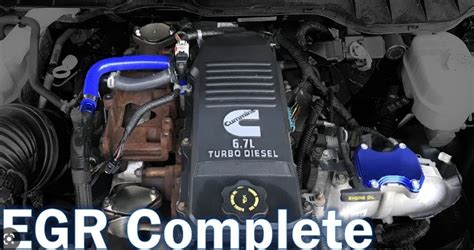6.7 Cummins Delete: Staying Within Your Budget
Deleting your 6.7 Cummins emissions system—a popular modification among owners seeking increased performance and fuel economy—can be a significant undertaking. The cost can vary wildly depending on your chosen approach, desired components, and installation method. This guide breaks down the costs involved in a 6.7 Cummins delete, helping you stay within your budget while achieving your performance goals.
What Does a 6.7 Cummins Delete Actually Entail?
A "delete" refers to removing the components of the emissions system, primarily the Diesel Particulate Filter (DPF), Exhaust Gas Recirculation (EGR) system, and Selective Catalytic Reduction (SCR) system. This often necessitates tuning the engine's Electronic Control Module (ECM) to compensate for the removed components and prevent engine damage. The delete process aims to improve airflow, reduce backpressure, and ultimately increase horsepower and torque, leading to better fuel efficiency.
How Much Does a 6.7 Cummins Delete Cost?
The cost of a 6.7 Cummins delete is highly variable, influenced by several factors:
-
Parts: The cost of replacement parts (like DPF and EGR delete pipes) varies significantly depending on the brand, material (stainless steel is generally more expensive than aluminized steel), and complexity of the kit. You can expect to pay anywhere from a few hundred to over a thousand dollars for high-quality components.
-
Tuning: This is arguably the most crucial and often the most expensive part of the delete. A professional custom tune tailored to your specific modifications is generally recommended and can cost several hundred dollars. Cheaper, pre-programmed tunes are available online, but these may not be optimized for your vehicle and could potentially void your warranty or damage your engine.
-
Installation: This can range from a DIY project (saving significant labor costs) to professional installation at a shop specializing in diesel performance modifications. Professional installation will add considerably to the overall cost, often ranging from several hundred to over a thousand dollars, depending on the shop's location and labor rates.
-
Additional Modifications: Many individuals choose to add other performance upgrades in conjunction with the delete, like cold air intakes, exhaust systems, or fuel system improvements. These upgrades will increase the overall cost.
What are the Different Approaches to a Budget-Friendly 6.7 Cummins Delete?
1. DIY Delete: The most budget-friendly approach is a do-it-yourself delete. This requires mechanical skills, specialized tools, and a good understanding of your truck's systems. While it eliminates labor costs, you bear the risk of damaging your engine if done incorrectly. Ensure you have access to comprehensive repair manuals and consider seeking guidance from experienced individuals in online forums.
2. Partial Delete: Instead of deleting all emissions components, consider removing only the DPF or EGR system. This approach reduces the overall cost, although the performance gains may be less significant.
3. Used Parts: Purchasing used components (after careful inspection for damage) can significantly reduce expenses, although it increases the risk of premature failure.
What About Legal and Warranty Concerns?
Legal Compliance: It's crucial to understand that deleting your emissions system may be illegal in your region. Regulations vary widely, and penalties for non-compliance can be substantial. Check your local and state laws before proceeding.
Warranty Implications: Deleting your emissions system almost certainly voids your vehicle's warranty. Manufacturers typically have clauses specifically excluding modifications that impact emissions systems.
H2: Will a 6.7 Cummins Delete Improve Fuel Economy?
While a delete can potentially improve fuel economy by reducing backpressure, this isn't guaranteed. The extent of fuel economy improvement depends heavily on your driving habits and other vehicle modifications. In some cases, aggressive driving after a delete might even negate any fuel savings.
H2: Are There Any Risks Associated with a 6.7 Cummins Delete?
Yes, several risks exist, including:
- Engine damage: Incorrect tuning or installation can lead to severe engine damage.
- Legal consequences: As mentioned above, deleting your emissions system might be illegal.
- Increased particulate matter emissions: Removing the DPF significantly increases particulate matter emissions, potentially impacting air quality.
Conclusion:
A 6.7 Cummins delete offers the potential for increased performance and fuel economy but comes with significant costs and potential risks. Careful planning, a realistic budget, and a clear understanding of the legal and mechanical implications are crucial before undertaking this modification. Prioritizing safety and legality should always take precedence over cost-cutting measures. Remember, a poorly executed delete can end up costing far more in repairs than a professionally done, potentially more expensive, job.

